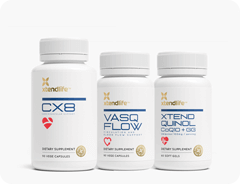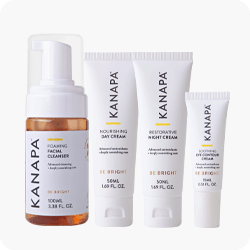I have been getting frequent emails on this subject for a long time. However, over the last 6 months they have become very regular.
Some of these emails/questions have been published in earlier issues of Xtend-Your-LIfe in which I have tended to dismiss coral calcium as being over hyped and poor value for money.
My view on it being over hyped has not changed and I feel that the claims of some of the promoters are nothing short of scandalous. But, I guess that could be said for some other products currently being promoted as well! With regard to it being poor value for money, that suggestion is true in many cases but not in all.
Because of the intense interest in Coral Calcium I thought that it would be appropriate to do some serious research on the matter. There is still more to do but I now have a good grasp of the basics and have been able to sort out fact from fiction part of which I am going to share with you today. There is much to cover which is why I have elected to break it down into two parts.
Lets start by doing a quick overview on coral calcium.
What is coral calcium?
As the name suggests, coral calcium comes from coral, which means it was once a part of an ocean reef. In fact, the product which is being sold as a dietary supplement is simply coral which has been ground up into a fine powder, purified, or processed. Coral reefs are formed primarily by Calcium carbonate which is produced by tiny coral polyps. These polyps feed on various forms of plankton which are rich in minerals.
I won't go into details about the structure of the coral except to say that it is the end result of minerals and trace elements which have been pre-digested by these little polyps. Because of the digestion process the minerals that make up the coral are considered to be organic, even the calcium carbonate which is usually inorganic. If you are interested in learning more about how the coral reefs came about I would suggest that you go to http://www.uvi.edu/coral.reefer/ which is an excellent website on the subject.
There are now a large number of companies promoting coral calcium but only about a dozen that actually harvest the raw product in Japan, or more specifically Okinawa which is a prefecture of Japan. These companies supply the coral calcium to manufacturers and distributors world-wide in either raw or finished form. Those companies then encapsulate the product or tablet them, often adding additional nutrients to improve the efficacy.
If you are interested in using coral calcium as part of your health regime, it is important that you understand that...
Not all coral calcium's are the same!
This is in spite of the fact that most of the coral calcium's come from Okinawa. In common with most ingredients used in dietary supplements there are good and bad variations. The main aspect which creates that differential is:
a) The type of processing.
b) Whether the coral is harvested above or below sea.
There are two main types of processing carried out on the coral. One involves heating it to very high temperatures in order to evaporate the majority of the heavy metals. The other process involves purifying the coral with ozone to kill any bacteria present. The ozone treatment is not necessary when the coral is heated because that kills anything that's alive in any case.
It's actually quite simple to determine which type of processing the coral has been subject to. The high temperature processing is limited to the under sea coral whereas the above sea coral is usually treated with the ozone process.
There is a sound reason for the different types of processing.
It's all about contaminants and the different methods of harvesting!
There is a significant difference between the amount of contaminants in the above and below sea corals. The above sea coral is 'old' coral or fossilized coral and may be millions of years old. As such it was formed well before man begun to pollute the oceans. In contrast the below coral is nowhere near as 'old' and as it is still in the ocean it has, and is being subjected to industrial pollution.
The difference becomes clear when you examine the certificates of analysis of the various 'brands' of coral calcium supplied by the Japanese harvesters and/or processors. The undersea coral is heavily contaminated with heavy metals including mercury as well as PCB's. (Pesticide residues) Even after they have been given the heat treatment the levels of heavy metals, although safe are well above those in the above sea coral before any treatment at all.
The seas around Japan are heavily polluted as are most Northern Hemisphere waters. I remember that it was not all that many years ago when there was a major mercury problem in local fish that caused serious illness and many deaths in Japan. The cause was traced down to a factory releasing mercury direct into the ocean.
Although they have cleaned up their 'act' on this particular issue pollution is still a serious problem. Mind you, it is also serious in North America when literally thousand of tons a year of mercury is released into the ocean, which has prompted the FDA to issue warnings about consuming some types of fish.
Anyway, it is no mystery as to why the undersea coral has such high levels of heavy metals prior to processing.
In contrast, the above sea coral is harvested from the Okinawan islands in much the same way as open case mining. The top soil is removed and the coral is 'mined'. These islands are made from ancient coral reefs which have become islands through shifting ocean levels over the ages. Therefore this coral has not been exposed to industrial pollution.
The undersea coral is harvested using big suction dredges mechanically working the ocean bed around the reefs. The dredges suck up everything in their path including stones and all sea life in the vicinity and is considered by many to be ecologically damaging.
Calcium/Magnesium ratios of coral calcium
This is an interesting issue. One major supplier of coral calcium produces a product which contains a suggested 'ideal' ratio of 2 parts calcium to 1 part magnesium. Note: There has never been any scientific validation of the 'idealness' to my knowledge and in some ways it's a little strange given that calcium and magnesium are antagonists. In other words they oppose each other. (More on this in Part 2).
Anyway, I asked the Japanese suppliers if they add magnesium to obtain this 2:1 ratio. They adamantly deny this but they cannot supply evidence that they don't. Rather interesting in that no independent scientists have ever found that ratio of calcium to magnesium in any samples of coral or for that matter anywhere else in nature.
So, if you are buying coral calcium with a 2:1 calcium/magnesium ratio you can be certain the magnesium has been added. Not that this is all bad... just disconcerting that all is not 'up front'.
If you have looked into buying coral calcium you will have found that there can be some big variations in price. This is where you need to exercise some good common sense judgment. Quality coral calcium is not cheap, but then it should not be as expensive as some of the products on the market. In my opinion the above sea coral is definitely best, providing it has been ozone treated.
Avoid the really cheap products as some of these coral calcium's may be of questionable purity. For your information one of our subscribers referred me to a website called coral calcium watch-dog.com. The URL is http://www.coralcalcium-watchdog.com/compare.htm it's worth looking at if you are contemplating buying coral calcium.
Now that we have covered the product in general terms we can now look at the claims and possible benefits. This we will do in Part 2. For those folks who want to know what I now think of coral calcium I would say this. I think that pure coral calcium is an excellent source of bio-available calcium, BUT it is not a cure all and can never take the place of a broad based supplement.
In good health,


 Supplements
Supplements Superfoods
Superfoods Bundles
Bundles



